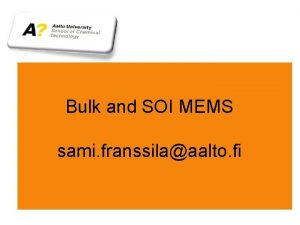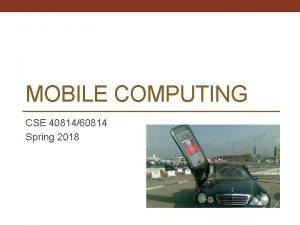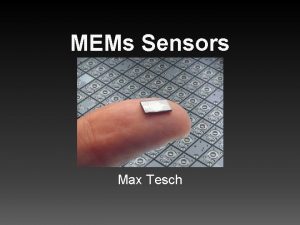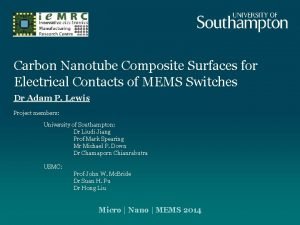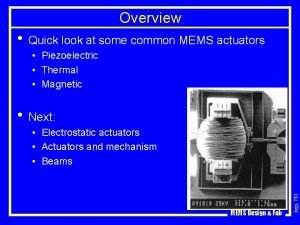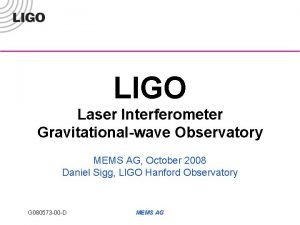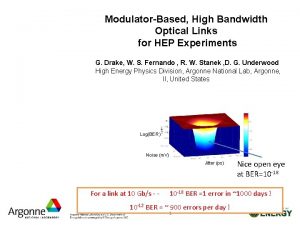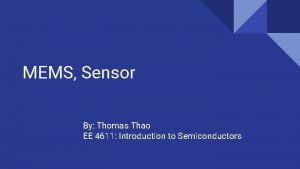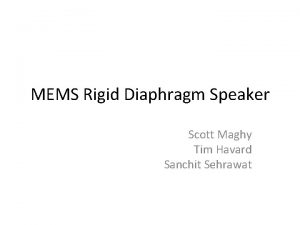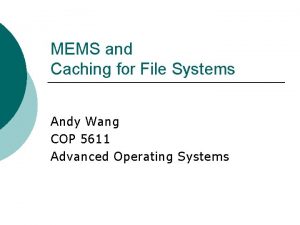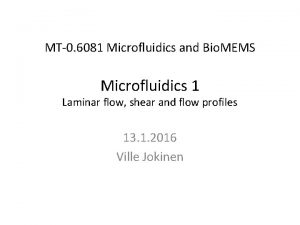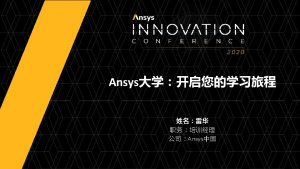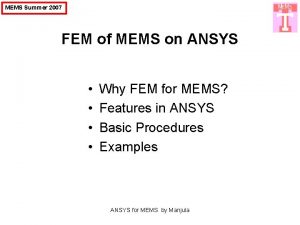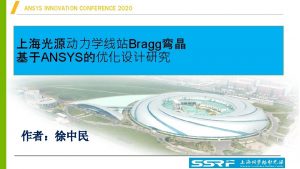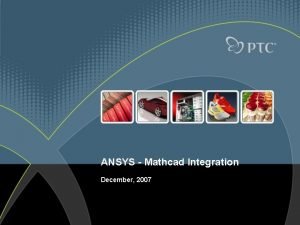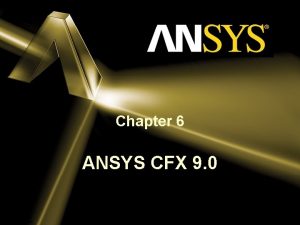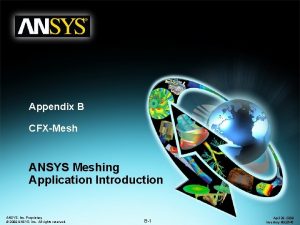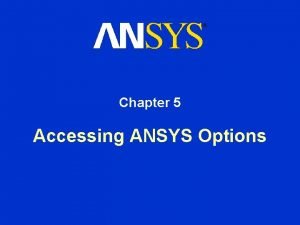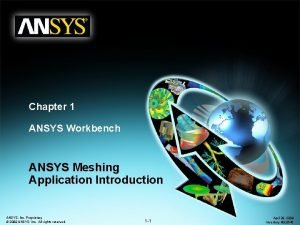MEMS Summer 2007 FEM of MEMS on ANSYS










- Slides: 10

MEMS Summer 2007 FEM of MEMS on ANSYS • • Why FEM for MEMS? Features in ANSYS Basic Procedures Examples ANSYS for MEMS by Manjula

MEMS Summer 2007 Purpose of FEA • Make development cycle short and cost effective • To understand behaviors, limits and interactions of complex processes • To optimize designs • For failure analysis ANSYS for MEMS by Manjula

MEMS Summer 2007 ANSYS Environment • Has GUI and Coded (for Batch Mode) command interfaces • Enable to both creation and importing of models • Capable of Linear and Non-linear analysis on the phenomena of Structural, Thermal, Electromagnetic, Electrostatics, Fluid, etc. • Ability to simulate Coupled-field behaviors. ANSYS for MEMS by Manjula

MEMS Summer 2007 Processors • Start with Begin level – Job name, File name, etc • Preprocessor – Model creation • Solution Processor - Apply Loads and Solving • Postprocessors - Analyzing Results ANSYS for MEMS by Manjula

MEMS Summer 2007 GUI vs Codes • Advantage of Repetition and parametric design with codes • Easy to follow and to visualize with GUI • Over 1200 commands with specific syntaxes for codes • Help file for each command on codes • Batch mode execution by codes ANSYS for MEMS by Manjula

MEMS Summer 2007 Model Creation • • Import or Create To create - Keypoints, lines, areas and volumes Material properties and real constants Element type and Meshing ANSYS for MEMS by Manjula

MEMS Summer 2007 Units ANSYS for MEMS by Manjula

MEMS Summer 2007 Applying Loads • Boundary Conditions • Various Types of Loads – Structural displacements, forces, pressures, temperatures (for thermal strain), gravity – Thermal temperatures, heat flow rates, convections, internal heat generation, infinite surface – Electrical electric potentials (voltage), electric current, electric charges, charge densities, infinite surface – Fluids velocities, pressures – Magnetic potentials, magnetic flux, magnetic current segments, source current density, infinite surface • Can apply loads in Steps ANSYS for MEMS by Manjula

MEMS Summer 2007 Solution and View Results • Specify analysis type and solve • Post 1 is used to review results from static or steady state problems • Post 26 is used to review results from transient problems. • Reading results by… – By Sets – Load Step (LS) – Time/frequency ANSYS for MEMS by Manjula

MEMS Summer 2007 Example • Let’s follow Multiphysics Analysis of a Thermal Actuator in Ansys Tutorial ANSYS for MEMS by Manjula
